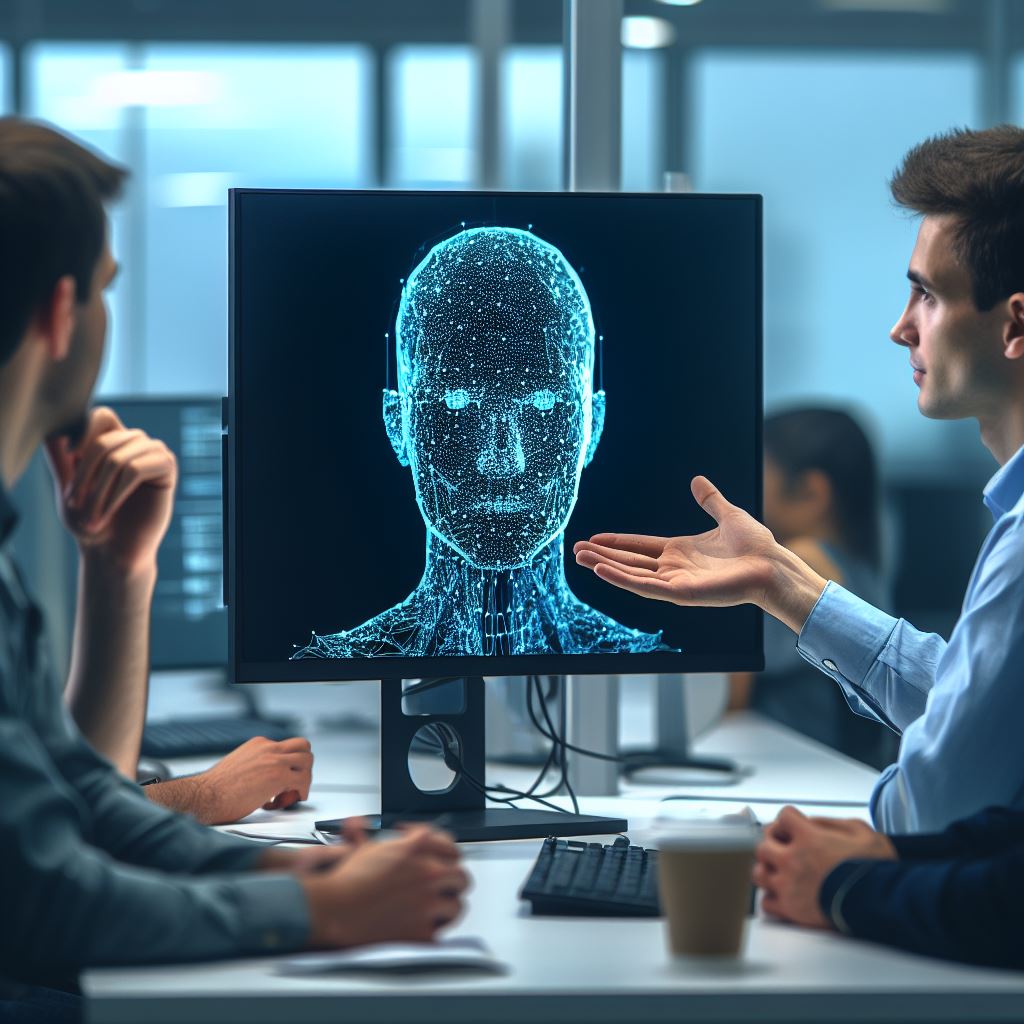Debugging Tips for AI Algorithms: A Developer’s Handbook
Last Updated on October 5, 2023
Introduction
Debugging AI algorithms is a crucial aspect of the development process that cannot be overlooked.
Explanation of the importance of debugging AI algorithms
AI algorithms play a significant role in various applications, making debugging essential for performance optimization.
Overview of the challenges faced by developers in debugging AI algorithms
However, developers face several challenges when it comes to debugging AI algorithms. These challenges include:
- Complex algorithms: AI algorithms often involve intricate computations, making it difficult to trace errors.
- Lack of transparency: AI models sometimes operate as black boxes, making it challenging to identify and fix issues.
- Data quality and quantity: Debugging becomes arduous when there is a scarcity of quality data or excessive noise.
- Training and validation mismatch: Discrepancies between training and validation data can lead to debugging difficulties.
- Hyperparameter tuning: Finding optimal hyperparameters is crucial, but it can be time-consuming and error-prone.
- Overfitting and underfitting: Balancing model complexity is vital to address overfitting or underfitting challenges.
- Reproducibility: Debugging becomes problematic when issues arise inconsistently or fail to replicate.
Addressing these challenges and efficiently debugging AI algorithms is crucial for achieving accurate and reliable AI models.
Understanding the AI Debugging Process
Debugging AI algorithms requires a systematic approach and an understanding of the unique characteristics of this field.
Steps involved in the debugging process for AI algorithms
Here, we walk through the steps involved in the debugging process for AI algorithms, highlighting the differences from traditional software debugging.
1. Gather Sufficient Data
- Collect enough data to identify the issue. A small dataset might not reflect the underlying problem.
- Ensure data consistency by preprocessing and cleaning, as faulty data can lead to misleading results.
2. Identify the Expected Output
- Have a clear understanding of what the correct output or behavior should be for the given input.
- Decide on a benchmark or reference model to compare your AI algorithm’s output against.
3. Inspect the Input
- Analyze the input data to identify any patterns, anomalies, or specific cases that may impact the output.
- Consider different scenarios and edge cases, ensuring your AI algorithm can handle various inputs.
4. Review the Algorithm Implementation
- Examine the code for any logical errors, algorithmic mistakes, or incorrect assumptions.
- Verify that the AI algorithm is correctly implemented as intended.
5. Monitor Model Training
- If your AI algorithm involves training a model, monitor the training process for any unexpected behavior.
- Check the loss function, gradient updates, and convergence metrics to ensure the model is learning correctly.
6. Evaluate Model Performance
- Assess the performance of your AI algorithm by running it on a separate validation or test dataset.
- Measure metrics like accuracy, precision, recall, or F1-score to gauge its effectiveness.
7. Record Debugging Metrics
- Maintain a log of all debugging efforts, including the specific issues encountered and the steps taken to address them.
- This record will help track progress, identify recurring problems, and share knowledge with collaborators.
8. Utilize Debugging Tools
- Take advantage of debugging tools specifically designed for AI, such as visualization libraries or model interpretation techniques.
- These tools can provide valuable insights into the inner workings of your AI algorithm.
Differences between Debugging Traditional Software and AI Algorithms
Debugging AI algorithms differs from traditional software debugging in several significant ways.
- AI debugging involves analyzing complex data models, while traditional debugging focuses on code errors.
- The non-deterministic nature of AI algorithms makes debugging more challenging compared to traditional software.
- AI debugging requires a deeper understanding of statistical concepts, such as bias, overfitting, and model capacity.
- Debugging AI often involves working with large datasets, making data preprocessing and cleaning critical steps.
- Monitoring model training and evaluating performance play a vital role in AI debugging, unlike in traditional software.
By following these steps and understanding the distinctions between AI and traditional software debugging, developers can effectively identify and resolve issues in their AI algorithms.
Read: Is a College Degree Necessary for a Career in Coding?
Common Debugging Issues in AI Algorithms
A successful implementation of AI algorithms requires extensive debugging to ensure their correctness and optimal performance.
Developers often encounter several common issues during the debugging process. This section will provide a description of these common issues and examples of challenges faced by developers.
Description of Common Issues
- Data Quality: One common issue in debugging AI algorithms is poor data quality. This can include missing values, inconsistent labeling, or biased data.
- Model Complexity: AI algorithms often involve complex models, which can lead to bugs and errors. Developers may face difficulties in identifying and resolving these issues.
- Overfitting: Overfitting occurs when a model performs well on training data but fails to generalize to new, unseen data.
It is a common issue that developers need to address while debugging AI algorithms.
Examples of Challenges
Let’s take a closer look at some examples of challenges developers may encounter while debugging AI algorithms:
- Data Quality: In image recognition tasks, if the training dataset contains blurry or low-resolution images, the algorithm may struggle to accurately classify new images.
- Model Complexity: When debugging natural language processing algorithms, developers may find challenges in fine-tuning complex language models to handle different language structures and semantic nuances.
- Overfitting: In fraud detection systems, if the model is trained on historical data that does not adequately represent future fraud patterns, it may fail to detect new types of fraudulent activities.
Addressing these challenges requires systematic debugging approaches and specific techniques. Here are a few tips to overcome these debugging issues:
Tips for Overcoming Debugging Issues
- Ensure Data Quality: Perform data preprocessing techniques such as removing duplicates, handling missing values, and carefully labeling data to improve its quality.
- Simplify Model Complexity: Start with simple models and gradually increase complexity while ensuring their interpretability. Use model visualization tools to identify potential bugs.
- Regularization Techniques: Implement regularization techniques like L1 and L2 regularization to mitigate overfitting.
Cross-validation techniques can also help validate the model’s generalization performance. - Monitor and Update: Continuously monitor and update your AI algorithms to adapt to changing data patterns and ensure their effectiveness in real-world scenarios.
- Collaborative Debugging: Engage in discussions with fellow developers and AI communities to gain insights into common debugging issues and learn from their experiences.
By following these tips, developers can effectively debug their AI algorithms and improve their overall performance and reliability.
Debugging plays a crucial role in detecting and correcting issues, making it an essential aspect of AI algorithm development.
In fact, debugging AI algorithms is a challenging but essential task for developers. Understanding common debugging issues, such as data quality, model complexity, and overfitting, is paramount.
By leveraging appropriate debugging techniques and following best practices, developers can ensure the accuracy and efficiency of their AI algorithms.
Read: Creating Chatbots: A Beginner’s Guide to Coding AI Conversations
Debugging Techniques for AI Algorithms
Overview of General Debugging Techniques Applicable to AI Algorithms
- Understand the problem: Analyze the requirements and expected outcomes of the AI algorithm.
- Divide and conquer: Break down the algorithm into smaller components to isolate the issue.
- Check inputs and outputs: Verify if the data is correctly passed to and returned from the algorithm.
- Use print statements: Print intermediate variables and results to track the flow of execution.
- Analyze error messages: Pay attention to error messages and stack traces for insights into the problem.
- Test ideas in isolation: Use simplified test cases to validate specific parts of the algorithm.
- Utilize visualization tools: Graphs and plots can help understand algorithmic behavior visually.
- Step through the code: Use debugging tools to trace the execution path and identify erroneous steps.
- Review the algorithm’s design: Analyze the logic and assumptions behind the algorithm’s implementation.
- Collaborate with others: Seek input from colleagues and domain experts to gain new perspectives.
Specific Techniques for Identifying and Resolving Common AI Algorithm Issues
- Data preprocessing issues: Check for missing values, outliers, and inconsistent data formats.
- Model selection problems: Assess if the chosen AI model is suitable for the given task.
- Overfitting or underfitting: Adjust the model’s complexity or regularization techniques to optimize performance.
- Hyperparameter tuning: Experiment with different hyperparameter values to improve model performance.
- Vanishing or exploding gradients: Inspect the gradient values and consider gradient clipping or normalization.
- Unbalanced data: Apply techniques like oversampling or undersampling to handle imbalanced datasets.
- Bias and fairness issues: Evaluate the training data and consider techniques to mitigate bias in predictions.
- Convergence and training issues: Monitor loss and accuracy during training and adjust learning rates if necessary.
- Optimization algorithm problems: Verify if the chosen optimization algorithm is appropriate for the model.
- Input/output dimension mismatches: Ensure that the model’s input and output dimensions match the data.
Debugging AI algorithms can be challenging due to their complexity, but with a systematic approach, these issues can be resolved effectively.
By applying general debugging techniques including understanding the problem, breaking it down, and analyzing error messages, developers can identify and isolate issues.
Additionally, using print statements, visualization tools, and collaboration with colleagues can provide further insights into the algorithm’s behavior.
Furthermore, there are specific techniques that address common AI algorithm issues. These techniques involve checking data preprocessing, model selection, and handling overfitting or underfitting.
Hyperparameter tuning, handling vanishing or exploding gradients, and addressing data imbalance or bias also play a crucial role in debugging AI algorithms.
Moreover, monitoring convergence and training issues, verifying optimization algorithms, and ensuring input/output dimension match are important aspects of debugging AI algorithms.
Overall, debugging AI algorithms requires a combination of general debugging techniques and specific knowledge of AI concepts.
It is essential to approach debugging systematically, analyze each component, and collaborate with others to gain a comprehensive understanding of the algorithm and its issues.
By following these techniques, developers can effectively identify and resolve problems in AI algorithms, leading to more accurate and reliable AI applications.
Read: Importing and Exporting Data: Excel VBA Solutions

Tools and Resources for AI Debugging
Debugging AI algorithms can be a challenging task, but with the right tools and resources at hand, developers can effectively identify and fix issues.
In this section, we will introduce various tools and resources available for debugging AI algorithms and explain how these tools can assist developers in the debugging process.
1. Visual Debugging Tools
- TensorBoard: A powerful tool for visualizing TensorFlow models, allowing developers to track and debug training progress.
- Netron: An open-source viewer for deep learning and machine learning models, helping developers visualize neural networks and debug model architectures.
- TensorWatch: A debugging and visualization tool specifically designed for deep learning, enabling developers to analyze models in real-time.
2. Logging and Debugging Libraries
- TensorFlow’s tf.debugging: Provides a set of useful debugging functionalities, such as asserting values, checking gradients, and examining tensors during runtime.
- PyTorch Lightning’s logging capabilities: Allows developers to log various metrics, including loss values, accuracy, and other custom metrics, making it easier to track model performance during training.
- Python’s logging module: A standard library that enables developers to log messages at different severity levels, aiding in the debugging process by providing valuable information about the code’s execution.
3. Data Analysis and Visualization
- Pandas: A versatile data manipulation and analysis library, which can help developers explore and analyze datasets, identify patterns, and detect anomalies.
- Matplotlib: A popular plotting library that allows developers to create various types of visualizations, aiding in data analysis and debugging by providing insights into the data distribution and relationships.
- Seaborn: A high-level data visualization library that is built on top of Matplotlib, making it easier to create visually appealing plots and gain deeper insights into the data.
4. Profiling and Performance Analysis
- TensorFlow Profiler: A built-in profiling tool in TensorFlow that helps developers identify performance bottlenecks in their models and optimize them for faster execution.
- PyTorch’s torch.autograd.profiler: Enables developers to profile and analyze the execution time of different operations and identify potential performance issues.
- NVIDIA Nsight: A powerful performance analysis tool for GPU-accelerated applications, allowing developers to pinpoint performance bottlenecks and optimize GPU utilization.
5. Online Communities and Forums
- Stack Overflow: A popular Q&A platform where developers can post questions related to AI debugging and get answers from the community.
- Kaggle Forums: A community-driven platform where developers, data scientists, and machine learning practitioners can discuss AI-related topics and seek help in debugging algorithms.
- GitHub Issues: Many open-source AI projects have active issue trackers where developers can report bugs, seek assistance, and collaborate with others to debug algorithms.
By leveraging these tools and resources, developers can streamline the debugging process and improve the performance and reliability of their AI algorithms.
Whether it’s visualizing models, analyzing data, profiling performance, or seeking help from online communities, the right combination of tools can make a significant difference in the debugging workflow.
Read: How to Stay Motivated During a Coding Course
Best Practices for Debugging AI Algorithms
Overview of best practices to follow while debugging AI algorithms
- Understand the algorithm: Grasp the functioning and design principles of the AI algorithm.
- Inspect raw data: Analyze the input data to identify any inconsistencies or anomalies.
- Start with simple inputs: Test the algorithm with simple inputs to spot any immediate errors.
- Include logging statements: Insert logging statements at crucial points to track the algorithm’s progress.
- Unit testing: Develop unit tests to ensure individual components of the algorithm are functioning correctly.
- Use visualization: Visualize the data and intermediate results to gain insights and detect patterns.
- Isolate and reproduce bugs: Reduce the complexity of the algorithm by isolating specific parts for testing.
- Check assumptions: Verify if the underlying assumptions made during algorithm implementation are valid.
- Collaborate with experts: Seek guidance from experienced AI practitioners to gain different perspectives.
- Consider performance bottlenecks: Identify and address performance issues that may affect debugging.
- Stay updated: Keep track of the latest advancements and techniques in debugging AI algorithms.
Tips for efficient and effective debugging
- Keep a systematic approach: Follow a step-by-step procedure while debugging to avoid missing any crucial details.
- Divide and conquer: Break down the algorithm into smaller parts to isolate and identify specific issues.
- Document and annotate: Maintain detailed documentation with annotations explaining each step taken during debugging.
- Compare with known solutions: Refer to existing models or baseline algorithms to compare and validate your results.
- Experiment with data variations: Test the algorithm with different types of data to understand its behavior in various scenarios.
- Use debugging tools: Utilize debugging tools specific to AI algorithms, such as specialized libraries or visualizers.
- Seek peer review: Collaborate with colleagues to review your debugging process and get valuable feedback.
- Implement progressive enhancement: Gradually enhance the algorithm by addressing one bug at a time.
- Test edge cases: Evaluate the algorithm’s performance with extreme or boundary cases to uncover hidden bugs.
- Consider computational resources: Be mindful of resource constraints and optimize the algorithm accordingly.
- Manage time effectively: Allocate dedicated time for debugging to ensure thorough analysis and problem-solving.
Debugging AI algorithms can be complex and time-consuming, but following these best practices and tips can significantly streamline the process.
By understanding the algorithm, analyzing the data, and employing effective debugging techniques, developers can identify and resolve issues efficiently.
Remember to collaborate with experts, utilize visualization tools, and stay updated with the latest advancements to continuously improve the debugging process in the rapidly evolving field of AI.
Case Studies: Debugging AI Algorithms
In this ssection, we will dive into the fascinating world of debugging AI algorithms by examining various case studies.
These real-world examples will provide valuable insights into the challenges faced and the solutions implemented during the debugging process. So, let’s get started!
1. Improving Image Classification Accuracy
- Analyzed an AI algorithm developed for image classification.
- Identified misclassifications and explored possible causes.
- Debugging involved tweaking hyperparameters, data preprocessing, and training augmentation.
2. Dealing with Overfitting in Neural Networks
- Explored a neural network model that suffered from overfitting.
- Observed a high training accuracy but poor performance on unseen data.
- Debugging steps included regularization techniques like dropout and weight decay.
3. Detecting Bias in Language Models
- Examined a language model that exhibited biased predictions.
- Analyzed the dataset to identify sources of bias.
- Debugging process involved data augmentation, retraining, and fine-tuning to address bias.
4. Addressing Reinforcement Learning Instability
- Investigated a reinforcement learning algorithm with unstable performance.
- Observed high variability in rewards and learning progress.
- Debugging techniques employed included experience replay, target networks, and adjusting exploration parameters.
5. Debugging Natural Language Processing Models
- Explored challenges faced in debugging NLP models.
- Analyzed issues like word ambiguity, syntactic errors, and semantic inconsistencies.
- Debugging solutions included fine-tuning, adding context awareness, and employing pre-trained embeddings.
6. Tackling Adversarial Attacks on Convolutional Neural Networks
- Examined a CNN model vulnerable to adversarial attacks.
- Explored various attack methods, such as adding perturbations to inputs.
- Debugging strategies involved adversarial training, input sanitization, and robust model architectures.
7. Debugging Recommendations Systems
- Investigated issues in a recommendation system that provided poor suggestions.
- Analyzed data biases, cold start problems, and lack of personalization.
- Debugging techniques included incorporating user feedback, diversifying recommendation sources, and using hybrid approaches.
8. Addressing Time Series Forecasting Errors
- Explored errors in a time series forecasting algorithm.
- Identified issues like outliers, trend detection errors, and seasonality misalignment.
- Debugging involved data preprocessing, feature engineering, and selecting appropriate models.
These case studies highlight the complexity of debugging AI algorithms and the range of challenges that developers face.
Each example required a deep understanding of the specific domain, careful analysis of data and model behavior, and the implementation of targeted debugging techniques.
By studying these examples, developers can gain valuable insights into the debugging process and learn from the strategies employed to overcome algorithmic issues.
Remember, debugging AI algorithms can be a time-consuming process, but with patience and analytical thinking, it is possible to improve the performance and reliability of these intelligent systems.
Conclusion
Debugging AI algorithms is crucial for ensuring optimal performance and reliability in AI applications.
By systematically identifying and resolving issues, developers can enhance the accuracy and efficiency of their algorithms.
Debugging also allows developers to gain valuable insights into the inner workings of their models, leading to continuous improvement.
It is important to remember that debugging is not a tedious task, but rather an opportunity for growth and innovation.
Embracing debugging processes can help developers create robust and trustworthy AI systems that can truly make a positive impact.
As AI continues to advance, the need for effective debugging will only become more critical.
By staying vigilant and proactive in debugging, developers can ensure the reliability and ethical use of AI algorithms.
So, let’s dive into debugging, embrace the challenges, and unleash the full potential of AI algorithms.


